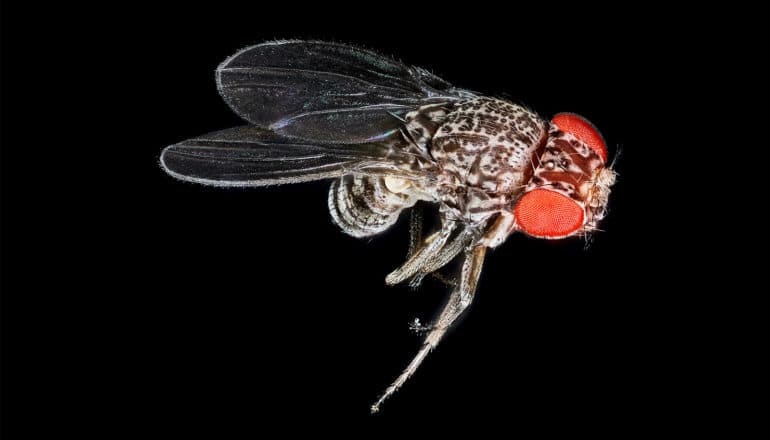
Researchers have uncovered the underlying genetics that make flies so good at flying.
Flies have evolved excellent flying skills thanks to a set of complicated interactions between numerous genes that influence wing shape, muscle function, and nervous system development, as well as the regulation of gene expression during development, according to their study.
“Fruit flies are colloquially named after their most recognizable ability: flight,” says lead author Adam Spierer, a postdoctoral researcher who earned his PhD from Brown University. “Yet until now, there wasn’t a systematic study working to uncover the genetics of flight in flies with modern genetic and computational tools.”
Spierer conducted the research while working in the lab of coauthor David M. Rand, a professor of ecology and evolutionary biology.
“One of the big questions in biology asks: How does genotype, or DNA, contribute to phenotype, or the traits we possess?” Spierer says. “Previously, it was thought that the summation of effects from many genes can add up to the end result. But other studies have done a good job of showing specific combinations of variants and genes can also have a large impact. Our work supports the role of both types of effects and interactions, and contributes to the broader debate within the field of quantitative genetics and complex traits.”
The familiar airborne insects of the genus Drosophila rely on flight for vital tasks, like courtship, finding food, and dispersing to new areas. Despite the importance of this ability, scientists have known little about the genetics underlying flight performance.
Pickpocket gene’s role in fly flight
In the new study in PLOS Genetics, researchers performed an analysis, called a genome-wide association study, to identify genes associated with flight. Using 197 genetically different fruit fly lines, they tested the flies’ ability to pull out of a sudden drop.
Then, using multiple computational approaches (including the new PEGASUS_flies, a gene inference tool first used in human studies that this research team adapted for Drosophila), they related the flies’ performance to different genes and genetic variants, as well as to networks of gene-gene and protein-protein interactions.
The researchers discovered that many genes and genetic variants involved in flight performance mapped to regions of the fly genome that determine wing shape, muscle and nervous system function, and regulate whether other genes are turned on or off.
They also identified a gene called pickpocket 23 (ppk23) that serves as a central hub for regulating the interactions of these genes. Pickpocket family genes are involved in proprioception—self-awareness of body position and movement—and in detecting pheromones and other chemical signals.
“This study suggests the pickpocket gene plays a more central role in flight performance than previously expected,” Spierer says.
Genetic interactions underlying flight
The team’s snapshot of the genetic variants that affect fruit fly flight performance may have implications for studying flight in other insects, and provide novel insights into the feedback systems that regulate flight control.
The research demonstrates the benefit of using multiple approaches to unravel the complex genetic interactions underlying traits like flight, which involve a number of different genes.
“While the study focuses on flight performance, the approaches used here provide a model for how to use multiple genetic and computational approaches to understand complex traits,” Rand says.
Adds Spierer: “Flies are a great model organism because of their cellular crossover with other organisms, and because of the many great genetic and computational resources available. While we can’t necessarily make a 1:1 crossover between fruit flies and other insects, we can come close enough to provide hints and leads for researchers working on similar studies with other insects that aren’t as accessible.”
The National Institutes of Health, the Dana Farber Cancer Institute, an Alfred P. Sloan Research Fellowship, a Packard Fellowship for Science and Engineering, and a National Science Foundation CAREER Award funded the work.
Source: Brown University
The post Team pinpoints what makes fruit flies champion fliers appeared first on Futurity.
from Futurity https://ift.tt/398hrsq
No comments:
Post a Comment